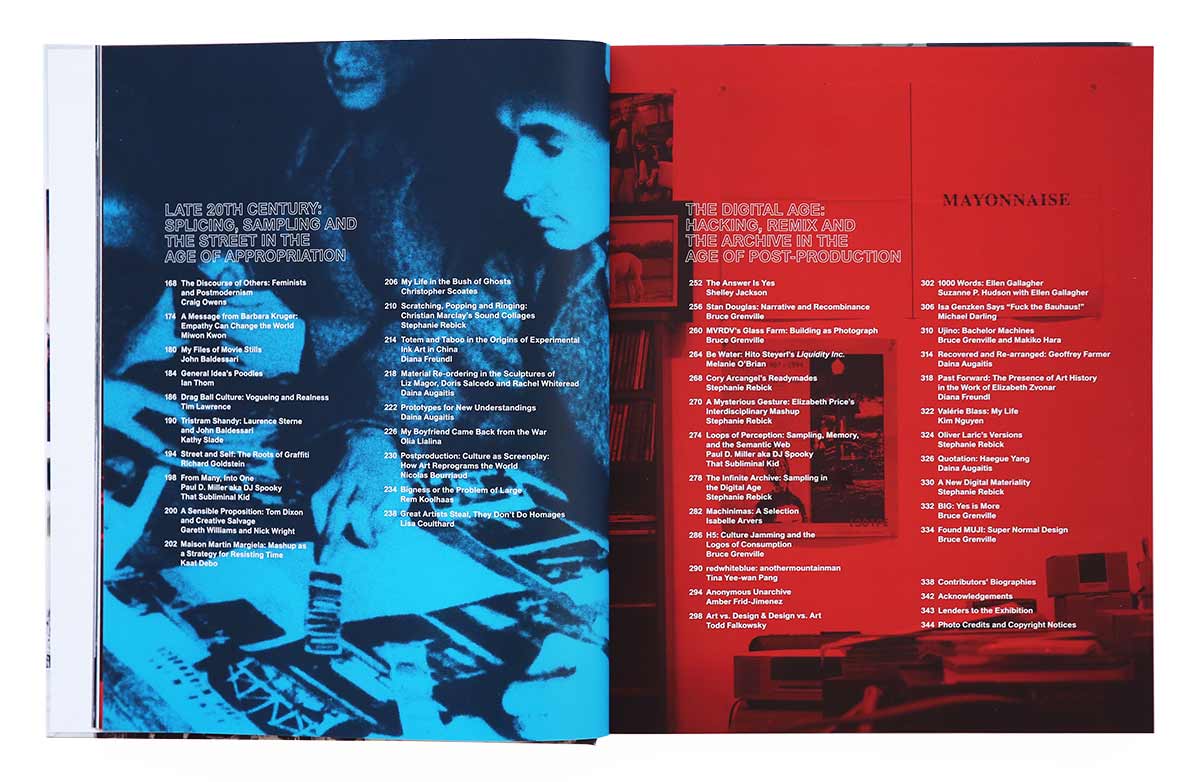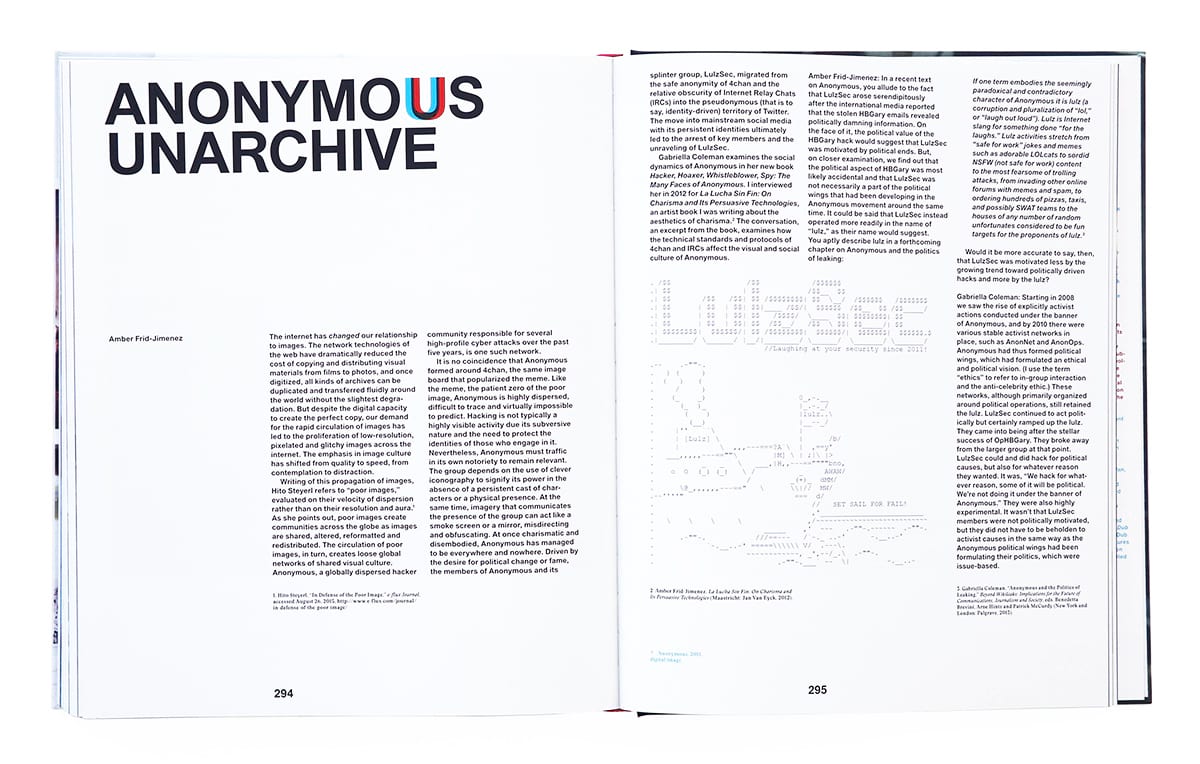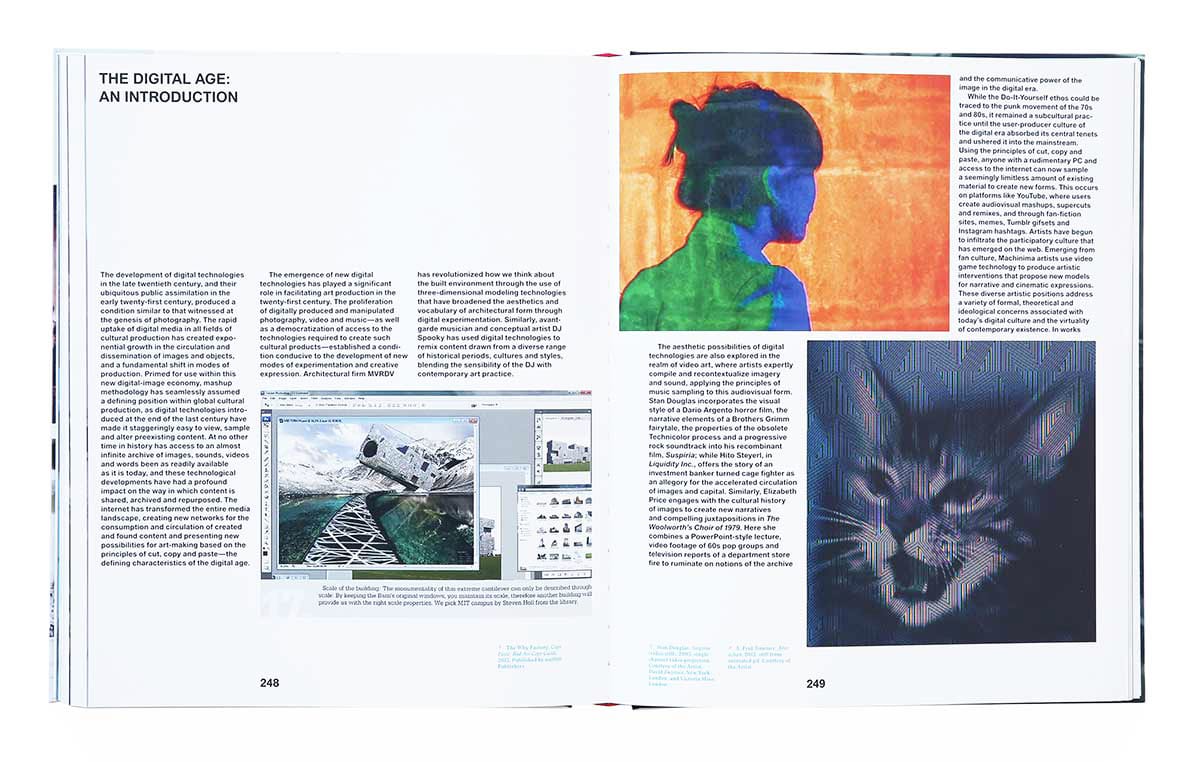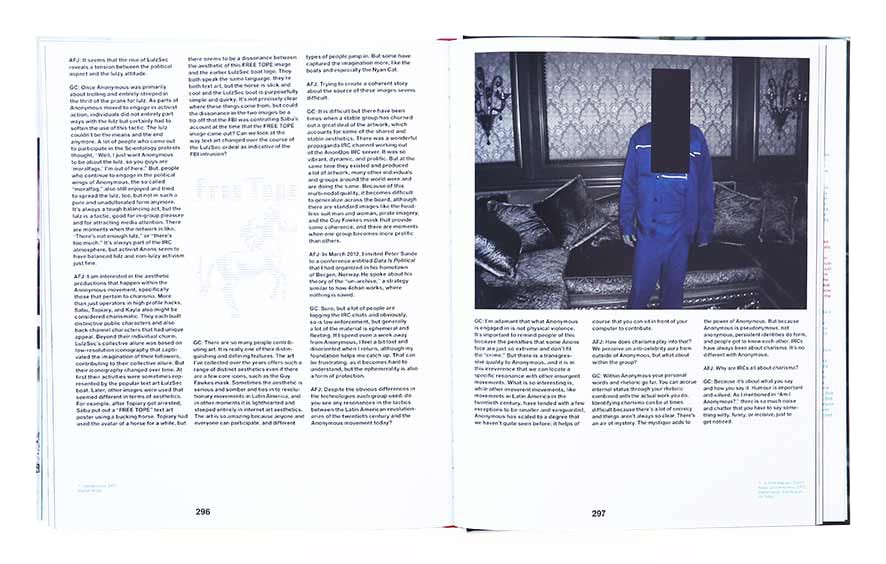Anonymous Unarchive (2016)
“Anonymous Unarchive” is a book chapter that I was commissioned to write for the exhibition catalogue for Mashup. My contribution consists of an essay on the state of the image in the age of the internet and data collection. It includes an interview with leading anthropologist Gabriella Coleman and a text that contextualizes the power and particularities of digital image culture in the construction of charismatic online figures. The book chapter includes original images of art works and found images. Other contributors include John Baldessari, Nicolas Bourriaud, Michael Darling, Olia Lialina, Kathy Slade among others. The catalog was published by the Vancouver Art Gallery in collaboration with Black Dog Publishing in the UK.
An excerpt of “Anonymous Unarchive” follows:
The Internet has changed our relationship to images. The network technologies of the Web have dramatically reduced the cost of copying and distributing visual materials, from films to photos, and, once digitized, all kinds of archives can be duplicated and transferred fluidly around the world without the slightest degradation. But, despite the digital capacity to create the perfect copy, our demand for the rapid circulation of images has led to the proliferation of low resolution, pixelated, and glitchy images across the Internet. The emphasis in image culture has shifted from quality to speed, from contemplation to distraction.
Writing of this propagation of images, Hito Steyerl refers to “poor images,” evaluated on their velocity of dispersion rather than on their resolution and aura. As she points out, poor images create communities across the globe, as images are shared, altered, reformatted, and redistributed. The circulation of poor images, in turn, creates loose global networks of shared visual culture. Anonymous, a globally dispersed hacker community responsible for several high profile cyber attacks over the past five years, is one such network.
It is no coincidence that Anonymous formed around 4chan, the same image board that popularized the meme. Like the meme, the patient zero of the poor image, Anonymous is highly dispersed, difficult to trace and virtually impossible to predict. Hacking is not typically a highly visible activity due its subversive nature and the need to protect the identities of those who engage in it. Nevertheless, Anonymous must traffic in its own notoriety to remain relevant. The group depends on the use of clever iconography to signify its power in the absence of a persistent cast of characters or a physical presence. At the same time, imagery that communicates the presence of the group can act like a smoke screen or a mirror, misdirecting and obfuscating. At once charismatic and disembodied, Anonymous has managed to be everywhere and nowhere. Driven by the desire for political change or fame, the members of Anonymous and its splinter group, Lulzsec, migrated from the safe anonymity of 4chan and the relative obscurity of Internet Relay Chats (IRCs) into the pseudonymous (that is to say, identity-driven) territory of Twitter. The move into mainstream social media with its persistent identities ultimately led to the arrest of key members and the unraveling of LulzSec …



